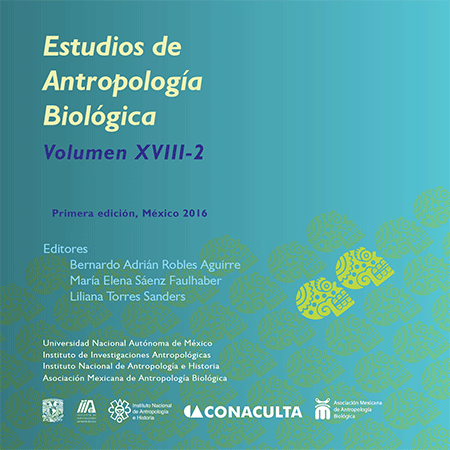Funerary practices in Huastec Septentrion. Taphonomic analysis of Entierro Rojo de Chak Pet, Tamaulipas
DOI:
https://doi.org/10.22201/iia.14055066p.2016.56871Keywords:
Funerary practice, Huasteca, taphonomy, social differentiation, red burial, FormativeAbstract
This paper presents the first results on the funerary practice, the bioanthropological profile, the taphonomic analysis and archaeological context of a third child burial, whose main characteristic is the red pigment present on their bones. The discovery was made in Chak Pet, a coastal village in the north of the Huasteca, whose occupation corresponds to the Late Formative (350-100 BC). The physical characteristics of the individual, the pigment distribution on the skeleton, the quality and quantity of grave goods, allows proposing that this was probably female, and could have a remarkable social position given to the obser-vable quantity of energy spent in her mortuary context. This research is of interest because, so far, the funerary context in the villages of the Huasteca region has been little addressed from a gender approach that seeks to identify the elements that shows the existing social differentiation among its members.
Downloads
Downloads
Published
How to Cite
Issue
Section
License

http://creativecommons.org/licenses/by-nc-nd/4.0/

